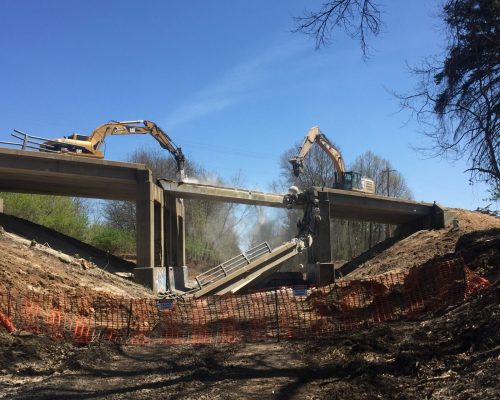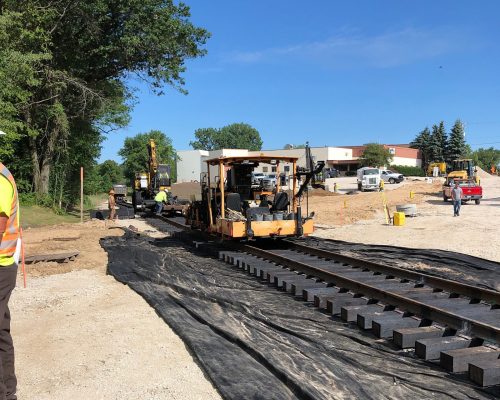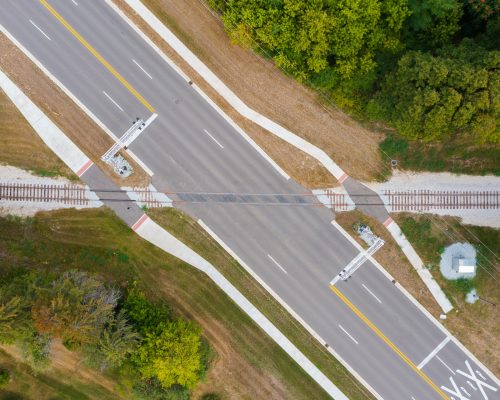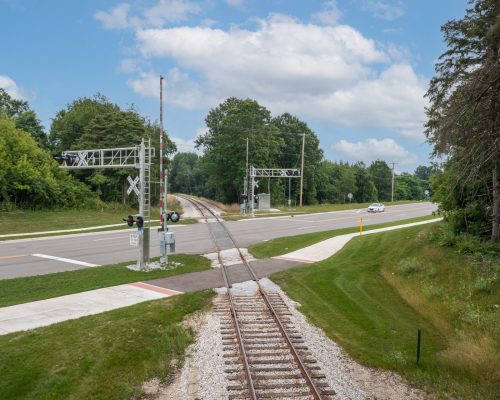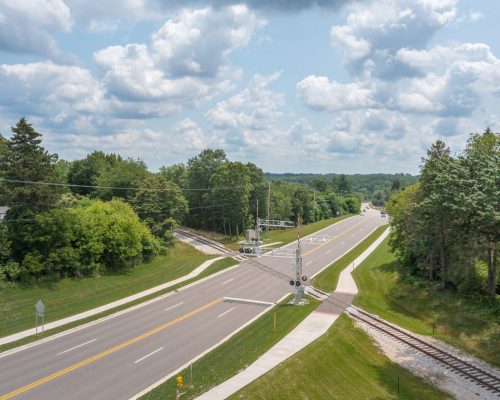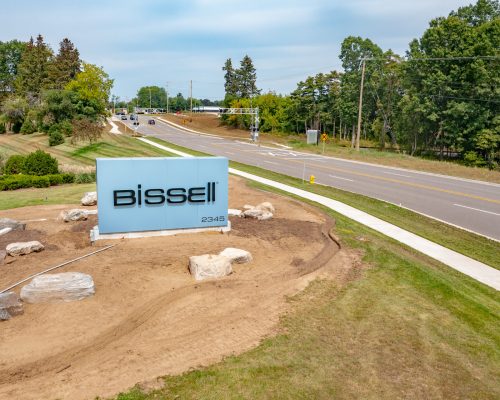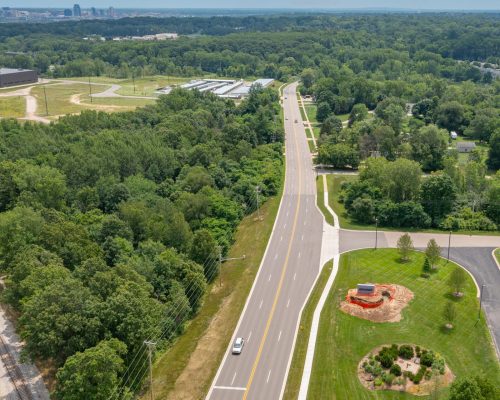The City of Walker spent almost 20 years trying to identify feasible funding sources to widen and replace the Walker Avenue bridge over the Coopersville & Marne Railway. The concrete box beam structure was weight-restricted, in serious need of repair, and not conducive to cost-effective maintenance that would extend its life. Surface maintenance had been routinely performed; however, bridge experts had pointed out that when beams begin to show signs of deterioration, it is best to look for permanent options. City leaders explored a potential maintenance project for approximately $350,000 to gain an additional 10-15 years of life from the bridge. Cost estimates for replacing and widening the bridge were nearly $6 million.
A commercial industry (BISSELL) within the corridor, south of the railway, was hindered from any facility growth/expansion due to the bridge’s limitations. In addition, the only access driveway for BISSELL provided inadequate sight distances for motorists. The minimum safety standard for a road profile is to meet the required stopping sight distance for the designed speed. A review indicated that this requirement was not being met. Vehicles traveling south over the bridge toward the BISSELL drive at high speed made it difficult for semi-trucks and other vehicles to pull out safely. While Walker Avenue was a four-lane road, the bridge over the railway narrowed down to two lanes.
To meet this requirement, the team investigated various solutions. Prein&Newhof worked with the Coopersville Marne Railroad to develop scenarios to provide enough stopping sight distance while minimizing the work needed to the existing rails. The decision came down to a cost-benefit analysis that evaluated the rail and road profiles.
Ultimately, it was more economically feasible to remove the bridge and return the corridor to an at-grade crossing, raising the rail grade and lowering the road grade. This solution would correct the stopping sight distance safety concern and eliminate the need for future inspection and long-term maintenance of the bridge. The design added an overhead signal at the crossing to make the railway more visible to oncoming motorists.
Prein&Newhof provided design, engineering, bid assistance, construction staking, full-time construction observation, professional project management, and consistent public communication, including a construction update webpage to keep the public informed of progress. Construction phasing was a significant consideration throughout the design process. Challenges included adjacent property access, existing utilities, and proposed utility relocations. The goal was to minimize disruption to the vehicular traffic and provide access to neighboring businesses to continue operations.
The design team worked closely with EGLE to secure permits to extend an existing 84-inch concrete culvert located under the railroad east of Walker Avenue. Retaining walls were designed to limit the culvert extensions on both sides of the railroad.
The entire project team’s relationship provided BISSELL the confidence to invest $6.3 million to renovate the building and created 99 new jobs. Construction began in February 2020 and was completed by August 2020.

